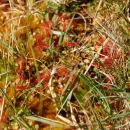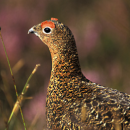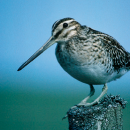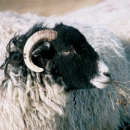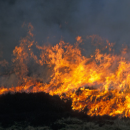1st November 2021

Students from the University of Hull on Spaunton Moor, studying upland conservation picture by Jonathan Pow.
Students from the University of Hull spent a day on Spaunton Moor in the North York Moors this week studying upland conservation.
Dr Alastair Ward, Head of the Department of Biological and Marine Sciences at the University of Hull, organised the visit to provide an opportunity for the students to gain a better understanding of traditional moorland management, grouse shooting, predator control activities, and raptor conservation.
Dr Ward said: “Heather moorland is a rare environment, iconic of the Yorkshire countryside. We are fortunate to have it in abundance on the University’s doorstep, yet many of our students have not encountered it. To learn about and experience first-hand the management needed to maintain moorland and its contribution to biodiversity conservation at the Spaunton Estate will be invaluable for zoology students at Hull.”
The North York Moors is designated a European Special Protection Area (SPA), because of its important populations of Merlin and Golden Plover.
Spaunton Estate’s moorland manager George Thompson showed the students some of the activities that are undertaken to provide access to the moorland for visitors and to benefit a range of species including: heather cutting and prescribed burning; repairs to bridleways and footpaths; Red Grouse counting; predator control; grazing management and control of ticks which can carry diseases such as Lyme disease. The group also studied the creation of ponds to benefit wildlife in the dry summer months.
George Thompson said: “Our work is designed for long-term conservation of moorland species, particularly birds, and the overall aim is to create good quality habitats for some of our very rare moorland birds. We keep predator numbers under control to give ground-nesting birds the best chance of breeding success. Engaging with young people and universities is a good way to provide information and answer questions directly.”
Birds of prey are doing particularly well at Spaunton and the Estate has recorded sightings of 16 of the 21 species of UK owls and birds of prey. This year the land managers saw a total of 1,552 birds of prey, double the number recorded in 2018, with 726 Buzzards, 193 sightings of Kestrel, 163 Barn Owls and 70 Merlin. Merlin are ‘red-listed’ birds, meaning a species that is globally threatened or with a severely declining UK population.
The estate also works with accredited experts from the British Trust for Ornithology to gather data on rare bird species.


